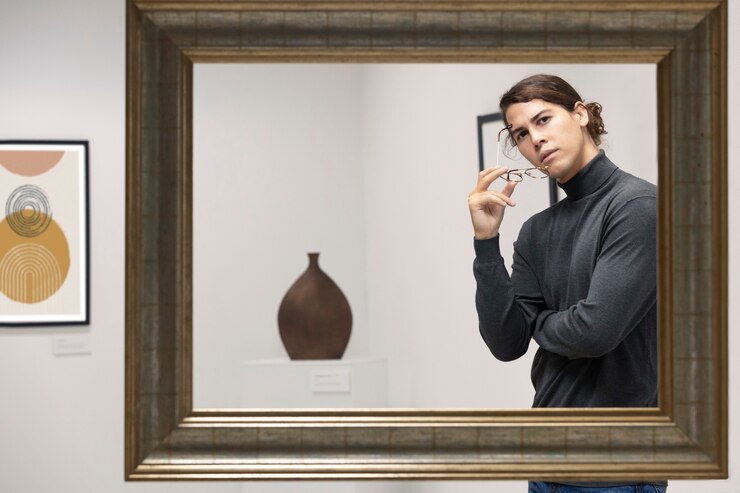Ancient art refers to the creative works produced by the earliest known human civilizations, dating back to prehistoric times and spanning up until the early Middle Ages. These artworks reflect the values, religions, myths, and daily life of their creators. Unlike modern art, which often emphasizes innovation, ancient art was largely driven by cultural and religious purpose.
The Art of Ancient Egypt
1. Iconic Architecture and Monumental Art
One of the most famous contributions of Ancient Egyptian art is its monumental architecture. Structures like the Great Pyramids of Giza and the Sphinx are iconic, representing the Egyptians’ obsession with the afterlife and their dedication to building eternal resting places for their pharaohs.
Temples and tombs were filled with intricate carvings, detailed wall paintings, and hieroglyphs, which told stories of gods, kings, and daily Egyptian life. Notably, these art forms were typically created to serve a religious purpose, such as guiding the dead to the afterlife or honoring the gods.
2. Sculpture and Funerary Art
Egyptian sculptures, particularly statues of pharaohs and gods, were often crafted from stone or metal and were created to be both lifelike and idealized. Funerary masks, like that of King Tutankhamun, reveal how deeply Egyptians revered their leaders even in death.
Greek and Roman Artistic Mastery
1. Greek Idealism
Ancient Greek art, particularly sculpture, set the standard for artistic perfection. The Greeks strived for idealized human beauty and balance in their depictions of gods, athletes, and mythical heroes. Classical Greek sculptures like the Discobolus (Discus Thrower) demonstrate mastery in depicting the human form with realistic proportions and movement.
Greek pottery, featuring intricate black-figure and red-figure techniques, was also notable for its storytelling through painted scenes of mythology and daily life.
2. Roman Realism and Engineering
Roman art borrowed heavily from the Greeks but shifted towards realism rather than idealism. Roman sculptures were more detailed, showing wrinkles, imperfections, and unique characteristics of real individuals. Portraits of Roman emperors reveal the complexity of their personalities and the grandeur of their power.
The Romans also excelled in architecture, pioneering engineering techniques like the use of concrete in massive structures such as the Colosseum and Pantheon, which remain architectural marvels today.
The Influence of Mesopotamian Art
Mesopotamian art, particularly from the Sumerians, Babylonians, and Assyrians, stands out for its bold depiction of kingship, war, and divine power.
1. Ziggurats and Religious Art
Ziggurats, the step-pyramids of Mesopotamia, were religious centers built to honor the gods. Relief sculptures adorned palaces, depicting fierce battles, lion hunts, and ceremonies that showcased the ruler’s strength and divine approval.
2. Cylinder Seals
Another unique art form from Mesopotamia was the creation of cylinder seals, intricately carved stone cylinders that left impressions in clay. These were used as signatures or symbols of authority and are remarkable for their detailed scenes of gods, rulers, and animals.
Ancient Chinese and Indian Art
1. Chinese Calligraphy and Bronze Work
In ancient China, art was closely linked to philosophy and spirituality. Calligraphy, the art of writing, was revered as the highest form of artistic expression, combining both aesthetic beauty and intellectual depth. Additionally, bronze vessels used in rituals were intricately designed with geometric patterns and animal motifs, signifying the wealth and power of Chinese dynasties.
2. Indian Art and the Spread of Buddhism
Ancient Indian art is deeply tied to religion, particularly Hinduism and Buddhism. The creation of Buddhist stupas, like the Great Stupa at Sanchi, reflected the Indian mastery of stone architecture and relief sculpture. These structures often depicted scenes from the life of Buddha and various deities.
Common Themes and Materials in Ancient Art
1. Materials:
- Stone (limestone, marble, granite) for sculptures and monuments.
- Clay for pottery and figurines.
- Metal (bronze, gold) for tools, jewelry, and statues.
- Pigments derived from natural minerals for painting.
2. Themes:
- Religion and the divine: Many artworks were created to honor gods and spiritual figures.
- Kingship and power: Sculptures and reliefs glorified rulers and their victories.
- Mythology and storytelling: Art often depicted mythological events and ancient legends.
Legacy of Ancient Art in Modern Times
The influence of ancient art is seen across contemporary culture. Modern architecture borrows from Greek and Roman designs, while museums around the world display ancient artifacts to educate and inspire. Artists continue to draw inspiration from the techniques and symbols of ancient civilizations, ensuring that the legacy of ancient art remains alive today.
Frequently Asked Questions
1. Why was art important in ancient civilizations?
Ancient art was vital for religious ceremonies, political propaganda, and as a means of recording historical events.
2. What are the oldest known pieces of art?
The cave paintings of Lascaux in France and the Venus figurines are among the oldest known artworks, dating back over 30,000 years.
3. How did ancient artists create colors for their paintings?
Ancient artists used natural pigments from minerals, plants, and even insects to create a range of vibrant colors for their paintings and pottery.
4. What are some of the most famous ancient sculptures?
Some famous ancient sculptures include the Venus de Milo, the Bust of Nefertiti, and the Statue of Zeus at Olympia.
5. How has ancient art influenced modern design?
Ancient art, particularly from Greece and Rome, has inspired neoclassical architecture, sculpture, and even fashion. Many principles of balance, proportion, and beauty are still used in modern design.











